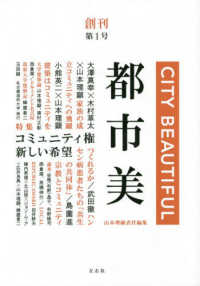Full Description
Meili Yang addresses long-standing questions related to the motivation and inducement of blue-and-white porcelain creation in Mongol-Yuan China, the process of establishing its relationship with Ming society, and its development in Japan as the country stabilized politically and culturally in early Edo. Discussion focuses on the advantageous environment encompassing the Chinese ceramic industry, and the role played by culture, politics and the society at large that brought about the creation of this novel porcelain. Of particular scholarly interest is the native Han attitude toward this Mongol-linked porcelain with its shiny cobalt-blue decoration. From prevailing indifference during late Yuan to valuing it as imperial ware during early Ming, a period of vigorous Sinicization in late Ming popularized the blue-and-white porcelain industrys thriving development. Ming society attitudes toward this porcelain was an intriguing process, and takes in transformations in religious belief and ritual, as well as art appreciation. Following the early Edo period, Japanese potters surpassed Chinese fine porcelain and competed in overseas markets, particularly in Europe. Behind the commercial competition, the contemporary upsurge of nationalism was arguably the most crucial dynamic. The European market became the arena of Chinese and Japanese fine porcelain advances during 17th and 18th centuries. Simultaneously, several European factories were inspired to practice fine porcelain technology; German Meissen was one of the earliest successes. A prime hitherto unanswered question is how Chinese Jingdezhen blue-and-white porcelain and Japanese Kakiemon ware influenced Meissen fine porcelain development. The blue-and-white porcelains value and significance needs to be judged not just on commercial factors, but in the broader perspective of ceramic research and development in terms of technique, and the study and training of ceramic potters.








